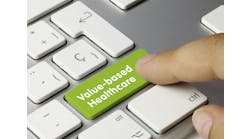By 2025, accountable care organizations will be required to do quality reporting via electronic clinical quality measures (eCQMs). Maria Alexander, senior director of population health at Mount Sinai Health System in New York, recently spoke about the pros and cons of reporting via eCQMs during the voluntary transition period between now and then.
The Centers for Medicare & Medicaid Services will end the Web Interface reporting option for Medicare Shared Savings Program ACOs in 2025. The ACOs have a transition period for the 2021-2024 performance years before they have to report all three eCQM/CQM MIPS measures under the Alternative Payment Model Performance Pathway.
Before working at Mount Sinai, Alexander has previously served as an ACO program specialist at Beth Israel Deaconess Care Organization as well as the director of the Division of Special Populations and Projects at CMS. She was speaking during a policy panel at the recent spring NAACOs meeting. Regarding getting to work on eCQM reporting early, Alexander said Mount Sinai is still in the process of navigating these waters. For attendees, she highlighted some reasons why they might want to report eCQMs earlier than 2025 as well as some reasons they might want to wait.
She mentioned that Mount Sinai operates a clinically integrated network that has value-based contracts with a variety of payers and a Level II MSSP ACO with about 45,000 lives. She noted that how you approach this issue might depend on the number of tax ID numbers (TINs) and EMRs in use in your ACO.
In terms of arguments for reporting sooner, CMS did build in some incentives to encourage ACOs to report eCQMS sooner than when they are required, Alexander explained. For one, it is easier to meet that Quality Performance standard in 2022 and 2023 — that is the threshold you have to meet in order to be eligible for shared savings. (Although if the Public Health Emergency’s “extreme and uncontrollable circumstances” policy goes into effect for the year, then you don't actually need to meet that threshold to be eligible for the shared savings; you would automatically make it, so that is less of a driver for performance year 2022, she noted.)
“Another reason to consider doing it sooner would be that they do give you the benefit of getting the higher score of the two,” Alexander said. “So there's not a harm from a performance perspective in reporting both ways. Finally, the most obvious reason to do it sooner is that if you haven't done this before, getting some practice before it's required and your only option, is probably a good idea.”
There are also some reasons to not report eCQMs yet, however, or at least not going too far down that path, she said. “One would be that if you're going to report two ways — if you're going to report via Web Interface and eCQMs — it's going to cost you more, whether that's internal resources or vendors that you're hiring. It is not free to report both ways — you do have to put in the effort,” Alexander stressed.
Another issue is that the reporting requirement is a bit of a moving target. On one hand, CMS has made it clear that they are moving in this direction. “On the other hand, NAACOS and many organizations are continuing to advocate for changes and raising what I think are some really valid concerns about equity as well as operational challenges,” Alexander said, “so we may see CMS continuing to evolve this policy. In fact, I hope that we will. That makes it a little bit tricky to plan, because you both want to get prepared, but also understand that what's required right now might look a little bit different in a year or two.”
Alexander said remaining flexible is a good idea. She added that most EHR vendors and data aggregators are not totally ready to implement eCQMS yet. “I think we're all learning about this. It is good to keep in mind that this is not something that folks have really done before.”
Another consideration for ACO leaders is how many TINs and EMRs are in their ACO. “If you have a single TIN and single EMR, you might be ready to do this. That's going to require less effort from your team and less cost than if you're in a different position, so think about your specific circumstances,” she said.
Mount Sinai has to deal with significant complexity. It has 35 TINs and more than 15 EMRs. “Most of our employed providers are on Epic,” Alexander said, “and then we have some employee providers on Athena. We have multiple TINs within Epic. We have a variety of independent practices that are part of our ACO who are on just as many EMRs.”
“Even if you're not ready to report, you should definitely start trying to run reports and understand how you're performing on these measures,” Alexander said. “But it could look a lot different than how you perform on Web Interface,” she added, “so get familiar with how you're performing and start trying to improve that. But I am not sure I would sign a contract for a five-year, locked-in agreement with a vendor when CMS might change some of these rules. But thinking about this now, while also being aware that some things could shift, is a good idea.”


